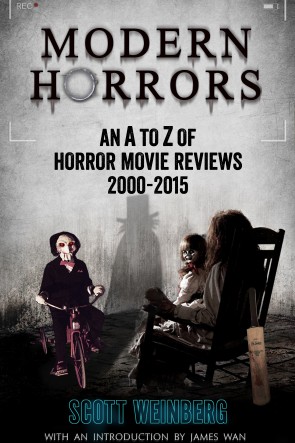Retro Review: BYZANTIUM (2013){0}
Seasoned horror fans will no doubt recognize the irony in today’s vampire cinema. The “romanticization” of the vampire has been evolving since (at least) John Badham’s 1979 rendition of Dracula — but we never saw our beloved cinematic bloodsuckers lose their teeth like they did in the feckless Twilight movies. What used to be sexy but scary became gothic romance, which led to pop-culture overkill: the vampire became neutered.
But if there’s a silver lining to the smash-hit success of the otherwise terrible Twilight movies, it’s that producers all over the world are now (all of a sudden!) willing to bankroll a horror film… just because it has some vampires and a dash of romance. So in a way we can thank Twilight for recent indies and imports like We Are the Night, Kiss of the Damned, and Neil Jordan’s Byzantium. It’s nothing if not a little ironic: the franchise horror fans love to hate is the one that paved the way for some much smaller, sexier, and smarter vampire films.
Sort of a slice of old-school Anne Rice with a lovely array of Irish ingredients, the smart and stylish Byzantium comes from director Neil Jordan, a filmmaker who has always treated horror like a first-class genre. (He’s best known for directing the adaptation of Interview with the Vampire, but his 1984 feature The Company of Wolves is definitely worth tracking down, although his malformed 1988 supernatural farce High Spirits probably is not.) Based on the play A Vampire Story by Moira Buffini, Byzantium is hardly the most unique or unpredictable piece of bloodsucker cinema you’ll come across, but it’s easy to assert that the earnest effort displayed here outweighs the borrowing of a few familiar tropes.
And because Neil Jordan is such a crafty veteran, he’s smart enough to fill a potentially conventional plot with a few unexpected twists and a handful of nifty little bells and wrinkles. The bulk of the story deals with teenaged Eleanor (Saoirse Ronan) and her strangely youthful mother (Gemma Arterton) as they arrive at a lovely little town in South England — but of course these women are not only bloodthirsty vampires; they’re also fugitives on the run from some powerfully tenacious enemies. But then Byzantium dips back into the “origin stories” of Eleanor and Clara, which is when the movie starts to get a bit less conventional and a little more, well, touching.
Jordan and editor Tony Lawson do a fine job of cutting between the modern material and the “old-fashioned” stuff, and it’s this delicate balance that elevates the story beyond that of two simple vampire girls. Clara is a particularly fascinating character; at one moment she’s every bit the super-sexy killer vampiress we see in comic books, and in the next scene she’s a deeply devoted mother who will shred anyone who threatens her daughter. Young Eleanor is sort of the opposite: somehow still sweet and decent after decades of undead misery, the eternally blossoming teenager seems forever poised between innocence and depravity. And since she’s played so darn well by Ms. Ronan, there are actually some stakes here. Both actresses are great, plain and simple.
Additional assets include excellent cinematography from Sean Bobbitt, whether he’s focusing on gorgeous Irish hills or grungy city streets; a few colorful supporting performances from guys like Sam Riley, Jonny Lee Miller, Caleb Landry Jones and Tom Hollander; and a narrative structure that seems odd at first but gradually reveals some admirable cleverness. Byzantium is basically 2/3rds “vampire stuff” you’ve seen before, a few new ideas that actually work, two great performances, and a lot of skilled veterans behind the camera.
So while I (and most horror fans) are still annoyed and irritated at those goofy Twilight movies, there’s a silver lining: some people still know how to make movies about young vampires, and now they’re able to.








